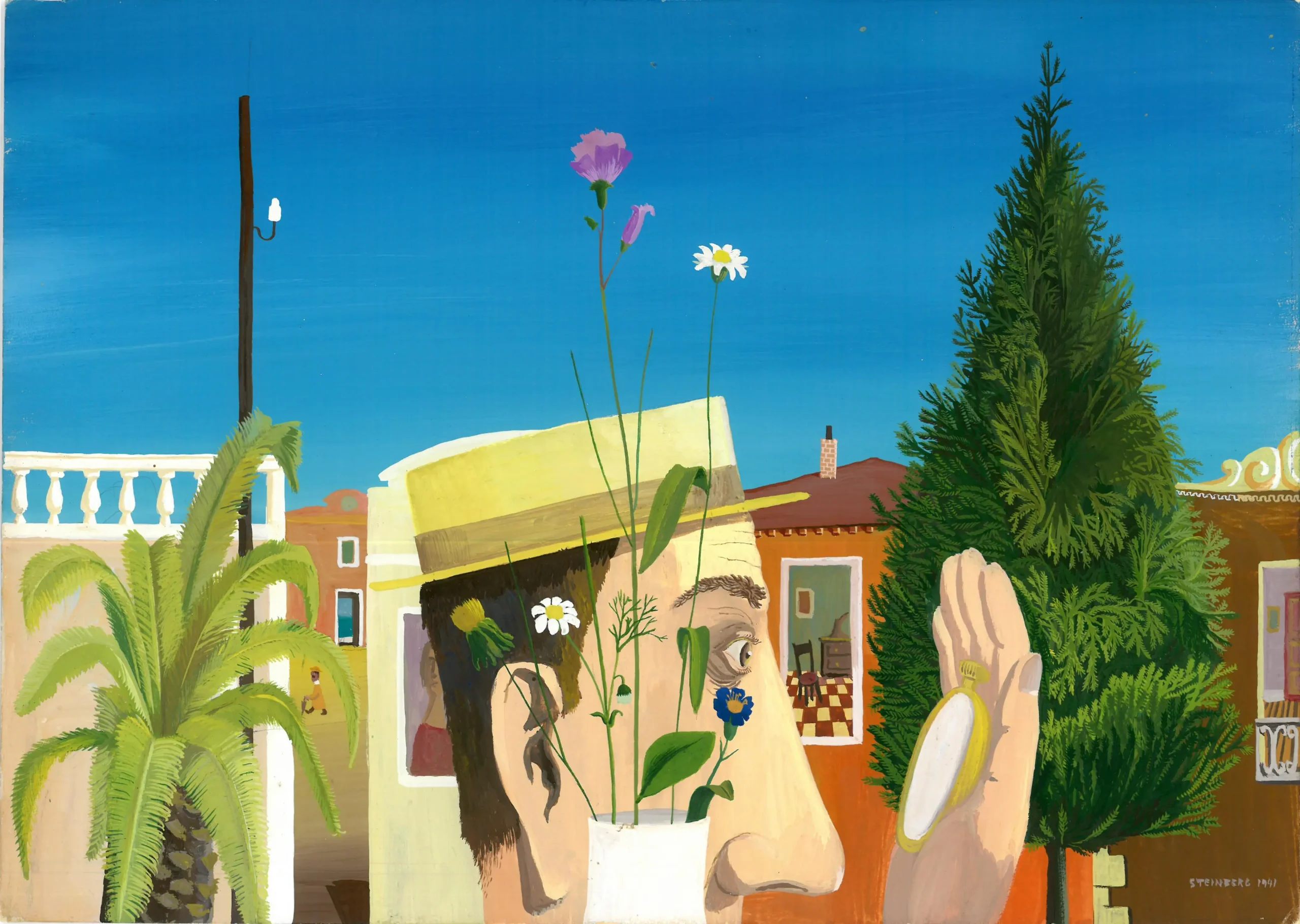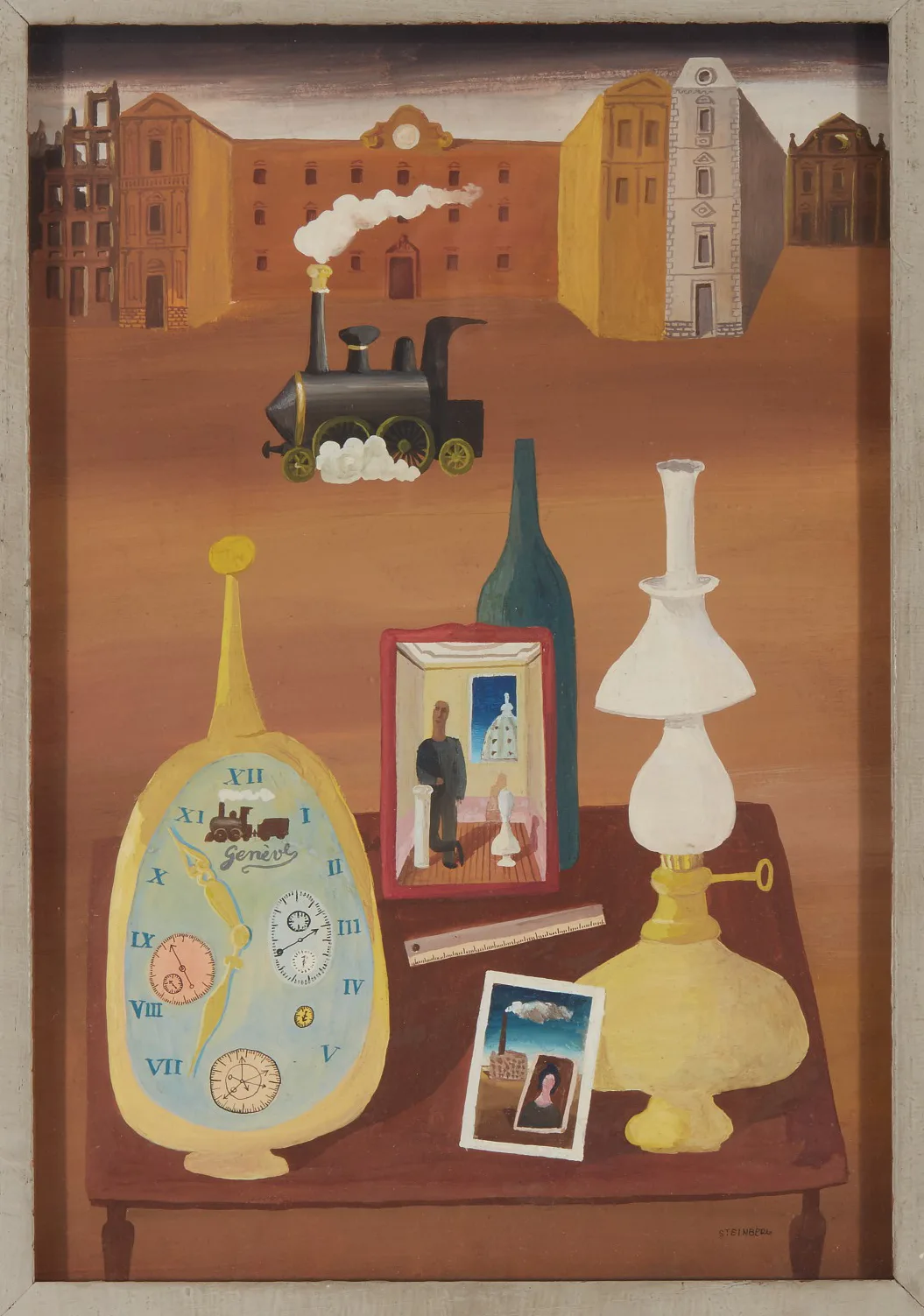Steinberg was born on June 15, 1914, in Râmnicu Sărat, Romania, the son of Moritz and Rosa Steinberg. The family soon moved to Bucharest, where Moritz opened a small printing and bookbinding shop and later manufactured boxes for candy, matzos, and cosmetics. It was in his father’s shop that the young Saul first encountered art—in the form of the reproductions used to decorate the boxes. The use of high-art imagery for commercial objects set the stage for his later integration of fine art and popular graphics and gave him an early lesson about the fate of the artwork in an age of mechanical reproduction. 2
Steinberg attended high school at the Liceul Matei Basarab, which emphasized academic subjects (Greek, Latin, philosophy, science) as well as music and art. But Romania was then a deeply anti-Semitic country, something he would remember with bitterness all his life. 3 After graduation in 1932, he spent a year in the Faculty of Philosophy and Letters at the University of Bucharest, before applying to the Faculty of Architecture. The Jewish quota for admission was small, and Steinberg was denied entry. In the fall of 1933, he enrolled at the Regio Politecnico, the architecture school of the University of Milan. One of Steinberg’s classmates there was Aldo Buzzi, who went on to become an author, editor, film director, and screenwriter. The two began a lifelong friendship, and Steinberg’s posthumously published letters to Buzzi (1945-1999) provide an important record of the personal and professional course of the artist’s life. 4
In 1936, while still studying architecture, Steinberg began contributing cartoons to the twice-weekly Italian humor newspaper Bertoldo and soon became one of the paper’s most popular artists. 5 The keen visual wit of the Bertoldo images would distinguish much of his art, long after he abandoned the cartoon genre.
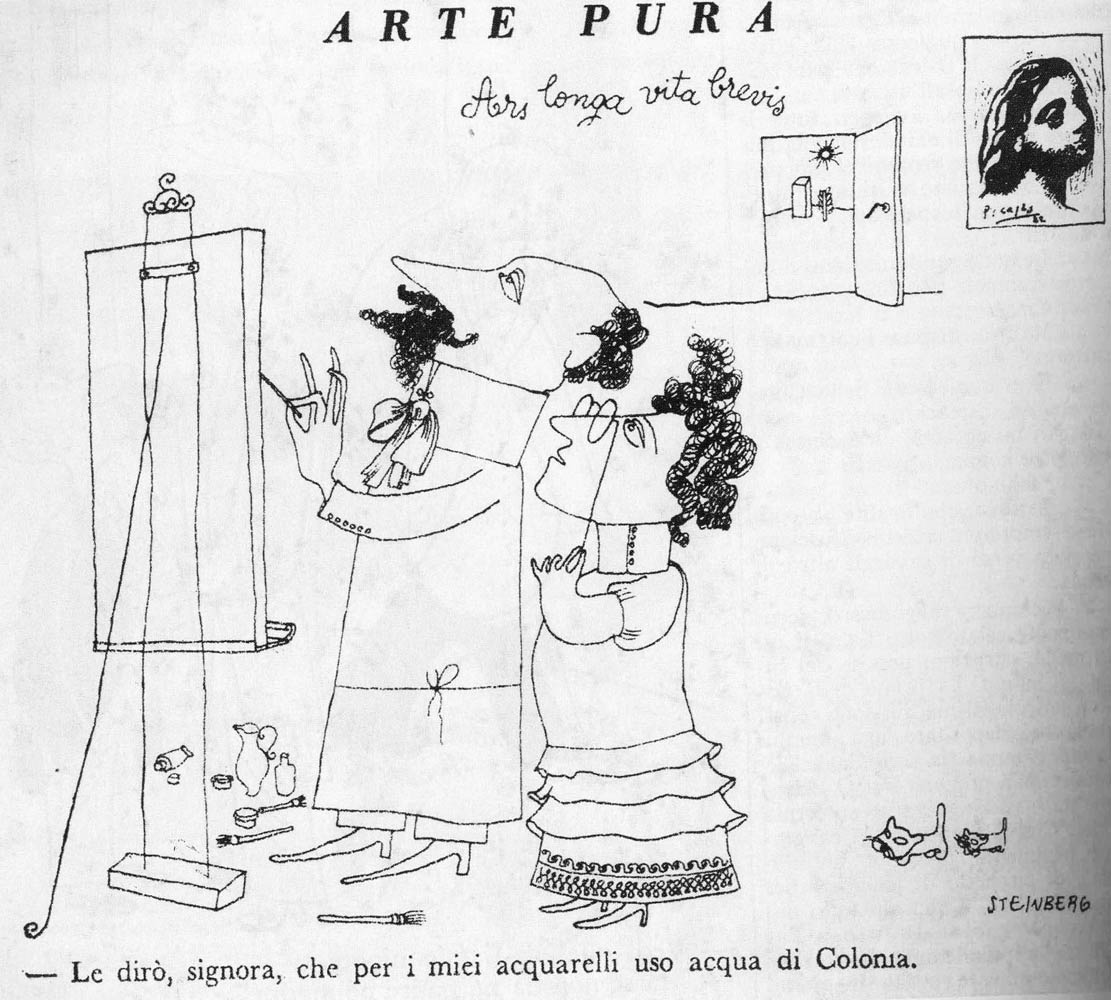
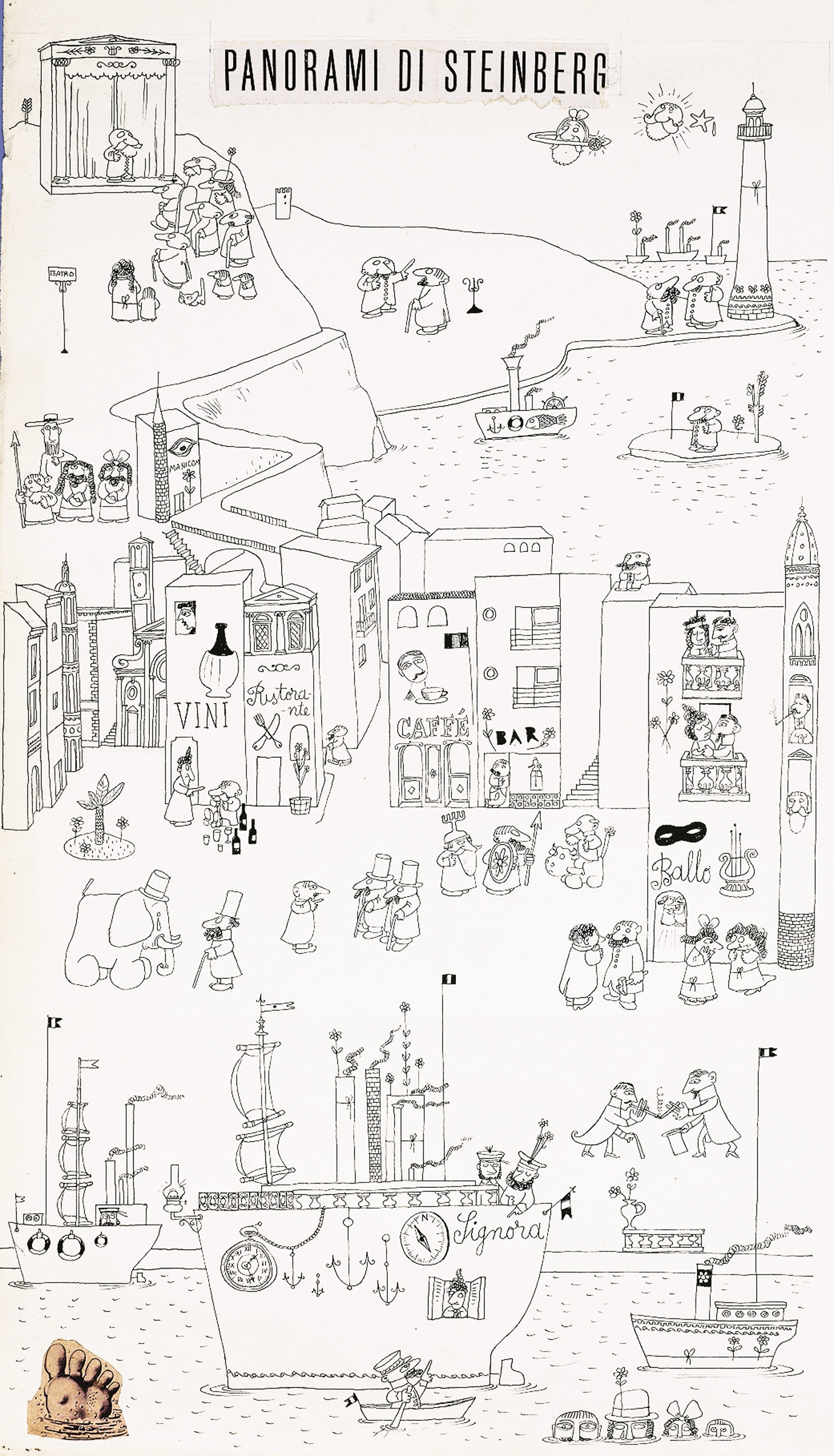
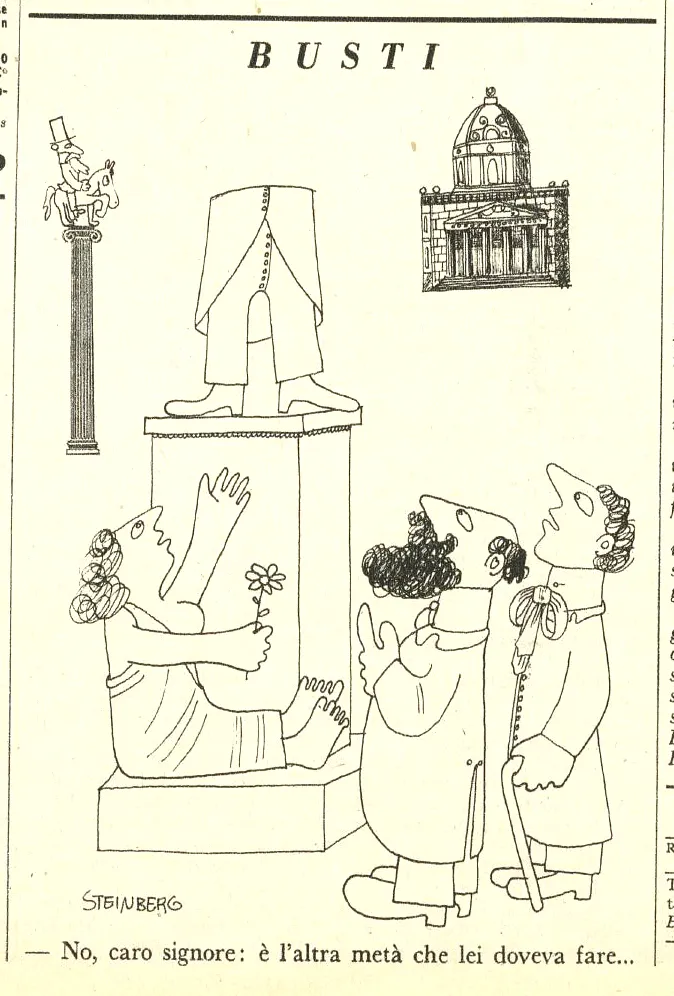
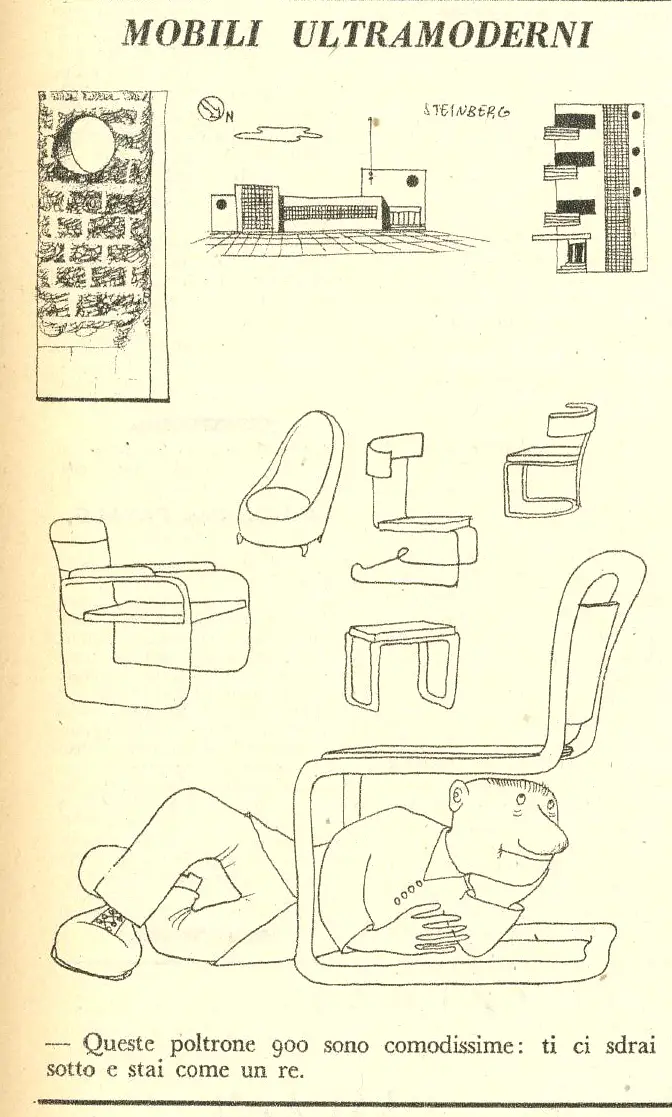
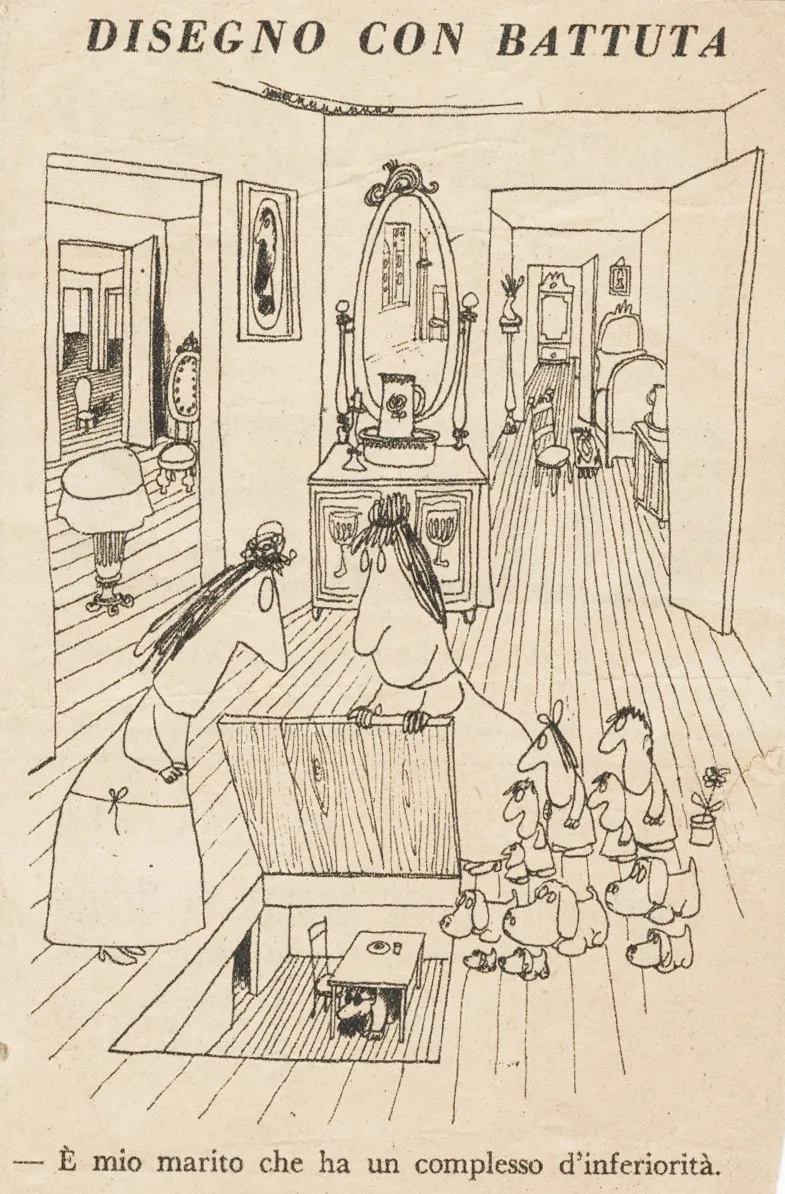
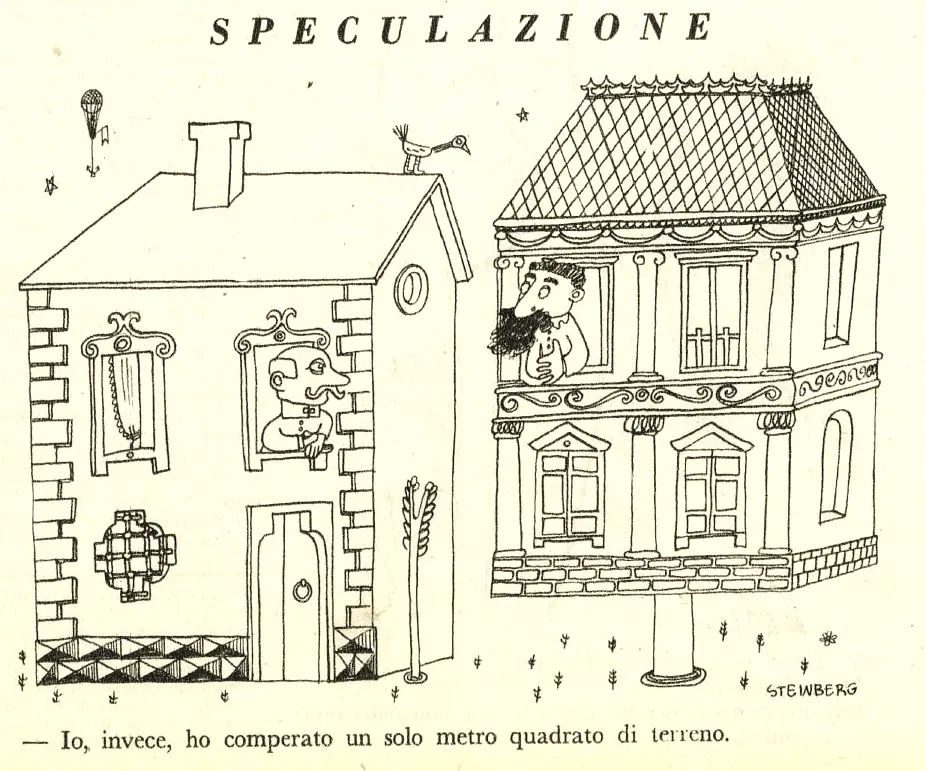
In April 1938, he left Bertoldo for its rival Settebello, where he served on the editorial board. But his tenure there was short-lived. By September, the promulgation of Fascist racial laws prohibited him from practicing either cartooning or architecture. He received his architectural degree in 1940 and began the long, anxious process of finding refuge in another country.6 Arrested by the police, he spent six weeks in an internment camp. He was finally able to leave Italy in 1941, with a visa for the Dominican Republic. After a year in Ciudad Trujillo (now Santo Domingo), he received his US visa, arriving in New York in early July 1942.
In his later Italian years, he seems to have tried his hand at painting. The few surviving works show a decidedly Surrealist character, no doubt from exposure to the works of de Chirico and his fellow Italian Surrealists. When he exhibited three paintings in an exhibition in Santo Domingo, he reported that he was “called a Surrealist.”6A
